Project details
Skill
Cost
Estimated Time
A boot stand is a great way to keep your entryway organized and your floors free from muddy, salt-stained boots. If you don’t want to buy one, you can build one yourself in just a few hours.
In this guide, we’ll walk you through creating a custom boot stand using turned-wood stair balusters. This stand is designed to accommodate multiple pairs of boots, keeping them upright and allowing them to dry properly. The use of stair balusters adds a decorative element, making this stand both practical and visually appealing.
Boot Stand Preparation
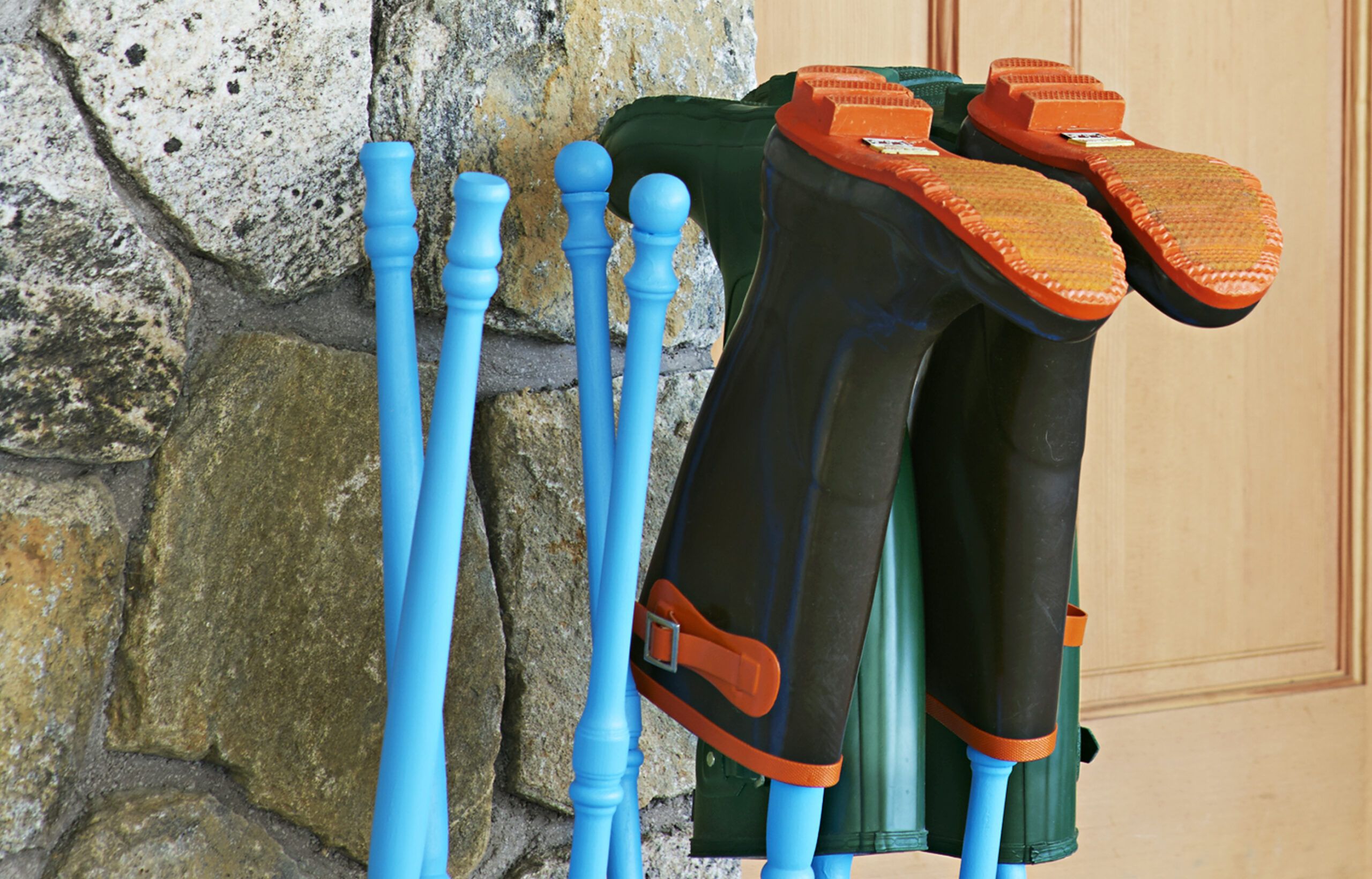
Before you begin, gather all the necessary materials and tools. You’ll need eight balusters, a 2×6 board for the base, two 2x4s for the feet, and various fasteners. You’ll also need a miter saw, drill, and socket wrench.
 Tape measure
Tape measure Pencil
Pencil Combination square
Combination square Miter saw
Miter saw Drill/driver
Drill/driver drill bit – 1/4-inch
drill bit – 1/4-inch paddle bit – 3/8-inch
paddle bit – 3/8-inch Socket wrench with 7/16-inch socket
Socket wrench with 7/16-inch socket nylon-polyester brush – 2-inch
nylon-polyester brush – 2-inch
Cut List
Follow this cut list for the project:
- Balusters: eight at 23 inches long, with uniform base heights cut to 10 degrees
- Boot-rack base: one 2×6 cut with 45-degree angled ends and to 24 inches between long points
- Boot-rack feet: two 2x4s cut with 45-degree angled ends and to 8 ½ inches between long points
Or download the cut list here.
Step 1: Cut the Balusters
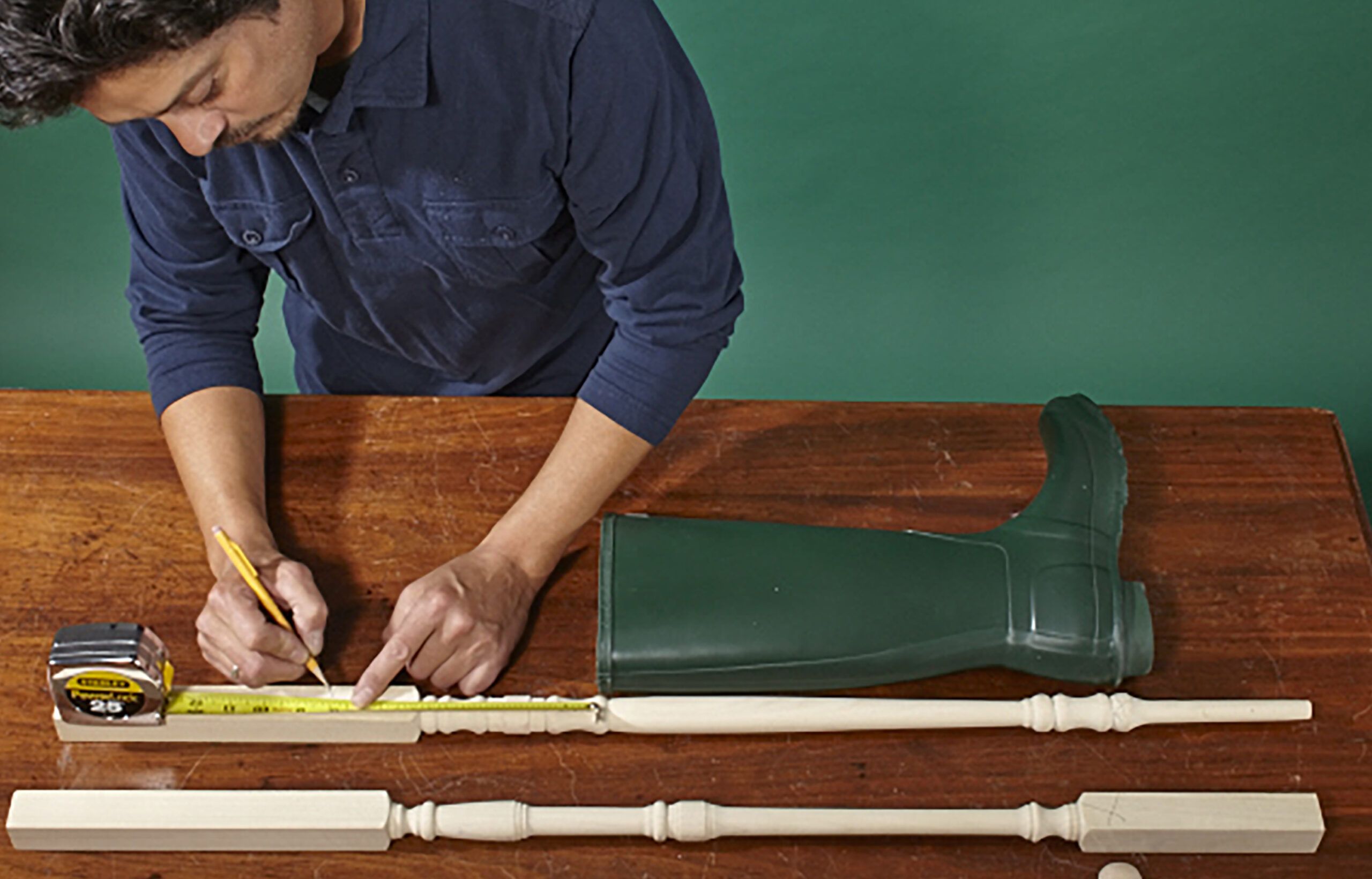
The first step in creating your boot stand is to cut the balusters to the appropriate length. Use an adult-sized boot as a guide to determine where to make your cuts. Trim the tops of the balusters, leaving about 8 inches of length beyond the opening of the boot. This extra length means that the boots will be well-supported.
When cutting the bases of the balusters, create a 10 degree angle. This slight tilt will help the boots lean back slightly, improving stability and preventing them from falling forward. Use a miter saw to make these angled cuts, checking for consistency across all eight balusters.
Carefully handle the cut balusters to avoid splinters. Sand the cut ends to smooth the edges for a more polished look.
Step 2: Drill Pilot Holes
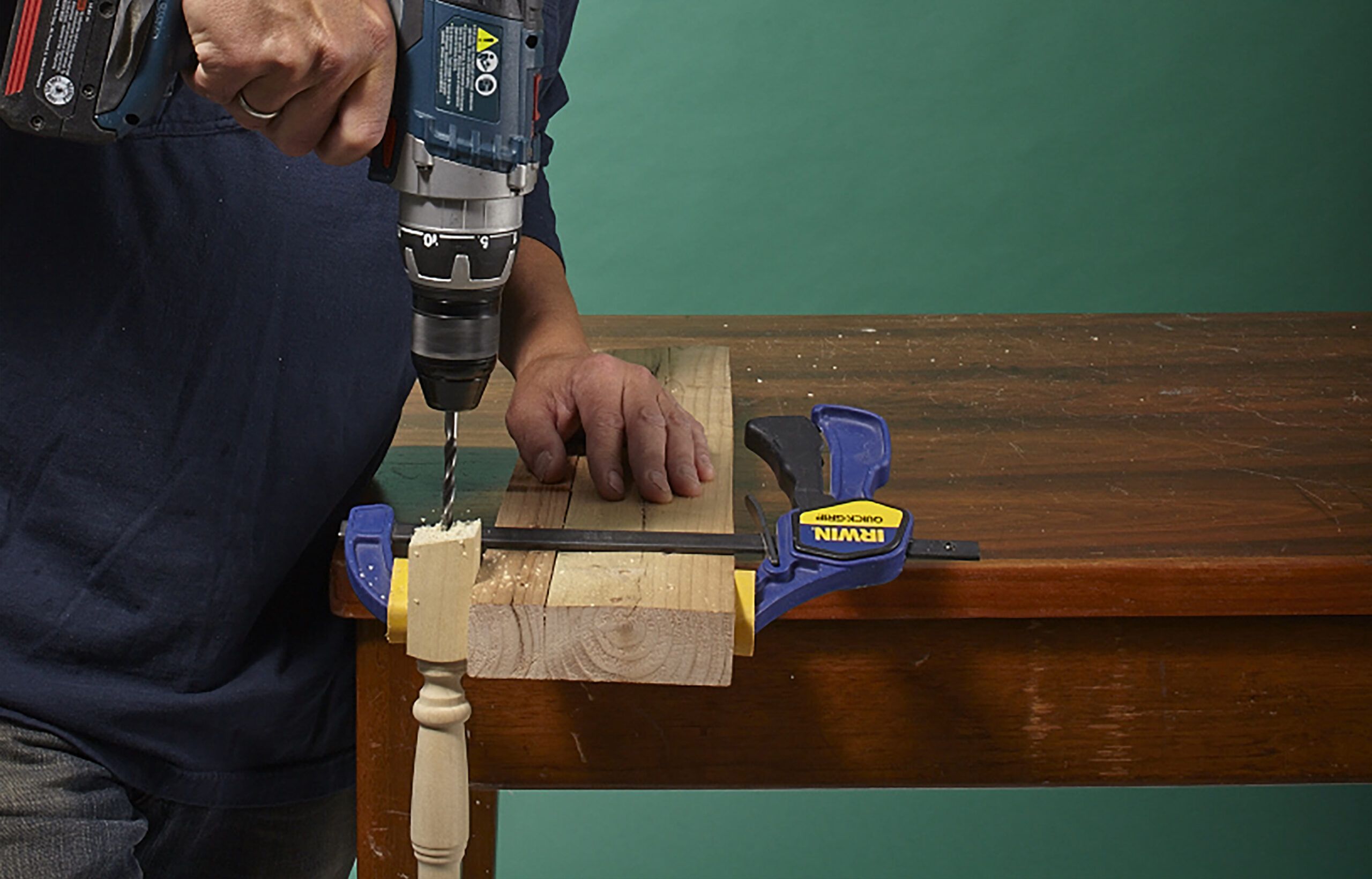
After cutting the balusters, you’ll need to prepare them for attachment to the base. On the bottom of each baluster, draw an “X” connecting the corners. This will help you locate the center point for drilling.
Using a 1/4-inch drill bit, create a pilot hole at the intersection of the “X” on each baluster. These pilot holes will make it easier to attach the balusters to the base and prevent the wood from splitting when you insert the lag screws later in the process.
Make sure the pilot holes are straight and centered to aid in a secure fit when attaching the balusters.
Step 3: Make the Base
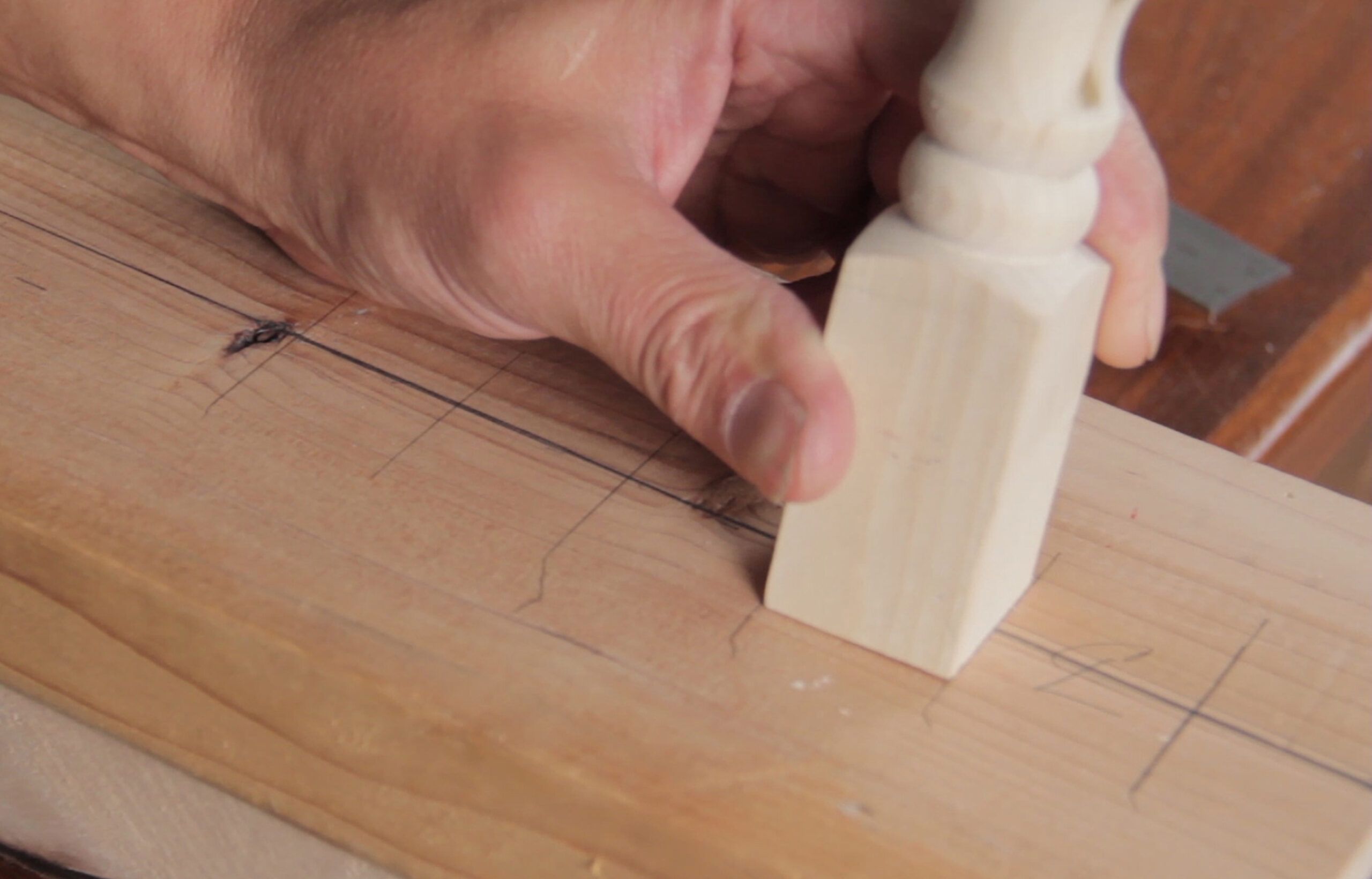
To make the base of the boot stand, start with a 2×6 board and find its center line. Use the bottom of one of your cut balusters as a guide to determine the spacing between each baluster on the base. For this project, we’re using balusters with a 1 1/4-inch square base and leaving a 1 1/4-inch space between each one.
Once you’ve determined the appropriate length for your base, cut the 2×6 accordingly. Our example uses a 24-inch long base, but you can adjust this to fit your space or the number of balusters you’re using. To add a decorative touch, cut 45-degree angles on the ends of the base, then make straight cuts to snub off the pointed ends.
Sand the edges and corners of the base, which improves the appearance and prevents potential injuries from sharp edges.
Step 4: Drill Holes for the Balusters
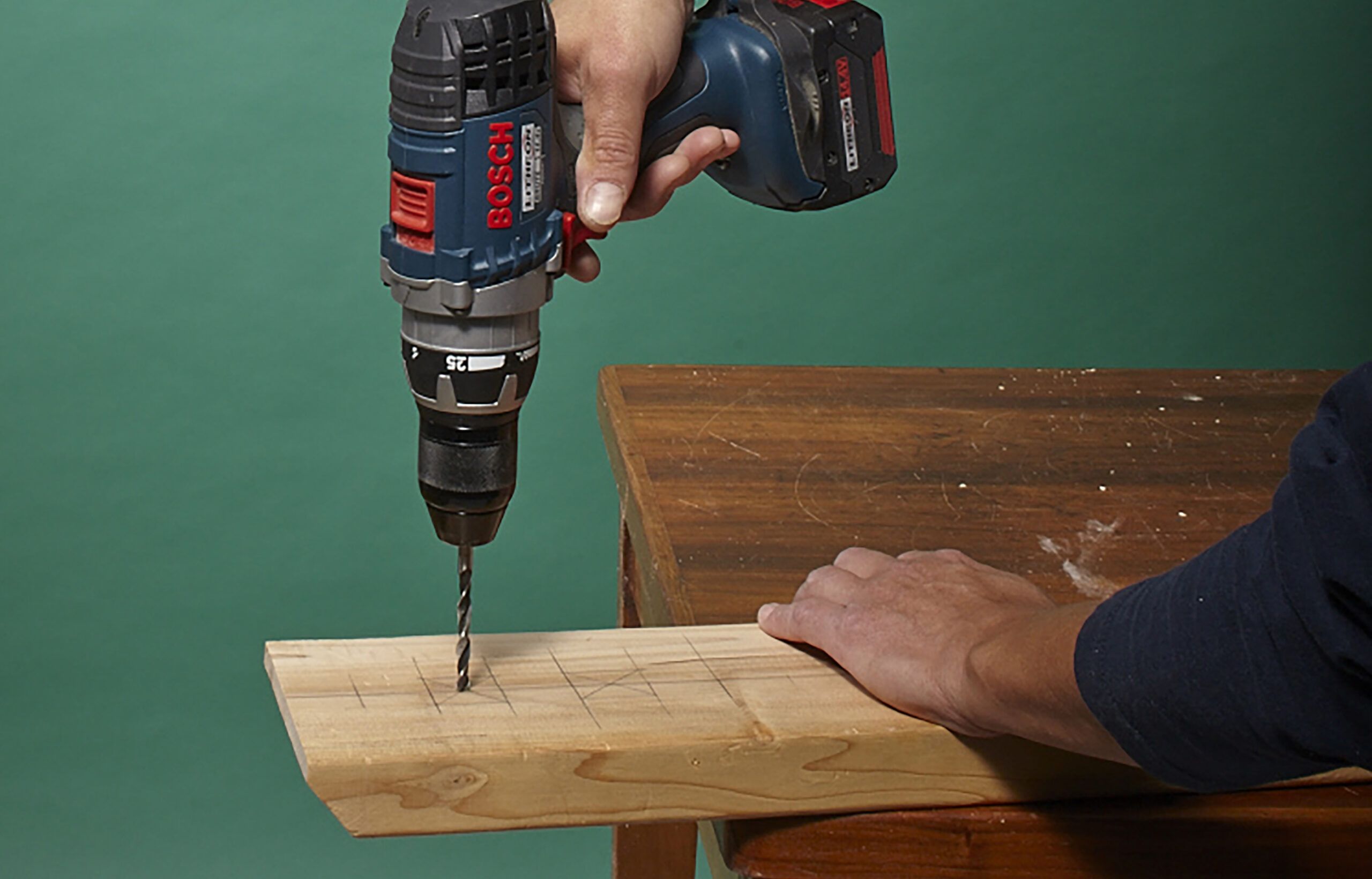
With your base cut to size, prepare it for attaching the balusters. Mark the center of each space where a baluster will be placed. Using these marks as guides, drill 1/4-inch holes through the base.
To create a clean look and proper attachment, you’ll need to countersink the fastener heads on the underside of the base. Use a 3/8-inch paddle bit to recess and widen the second pilot hole from each end on the underside. This step allows the feet to sit flush against the base while concealing the fasteners.
Double-check the alignment of the holes to maintain symmetry and stability. A well-aligned base contributes to the overall sturdiness of the boot stand.
Step 5: Attach the Balusters
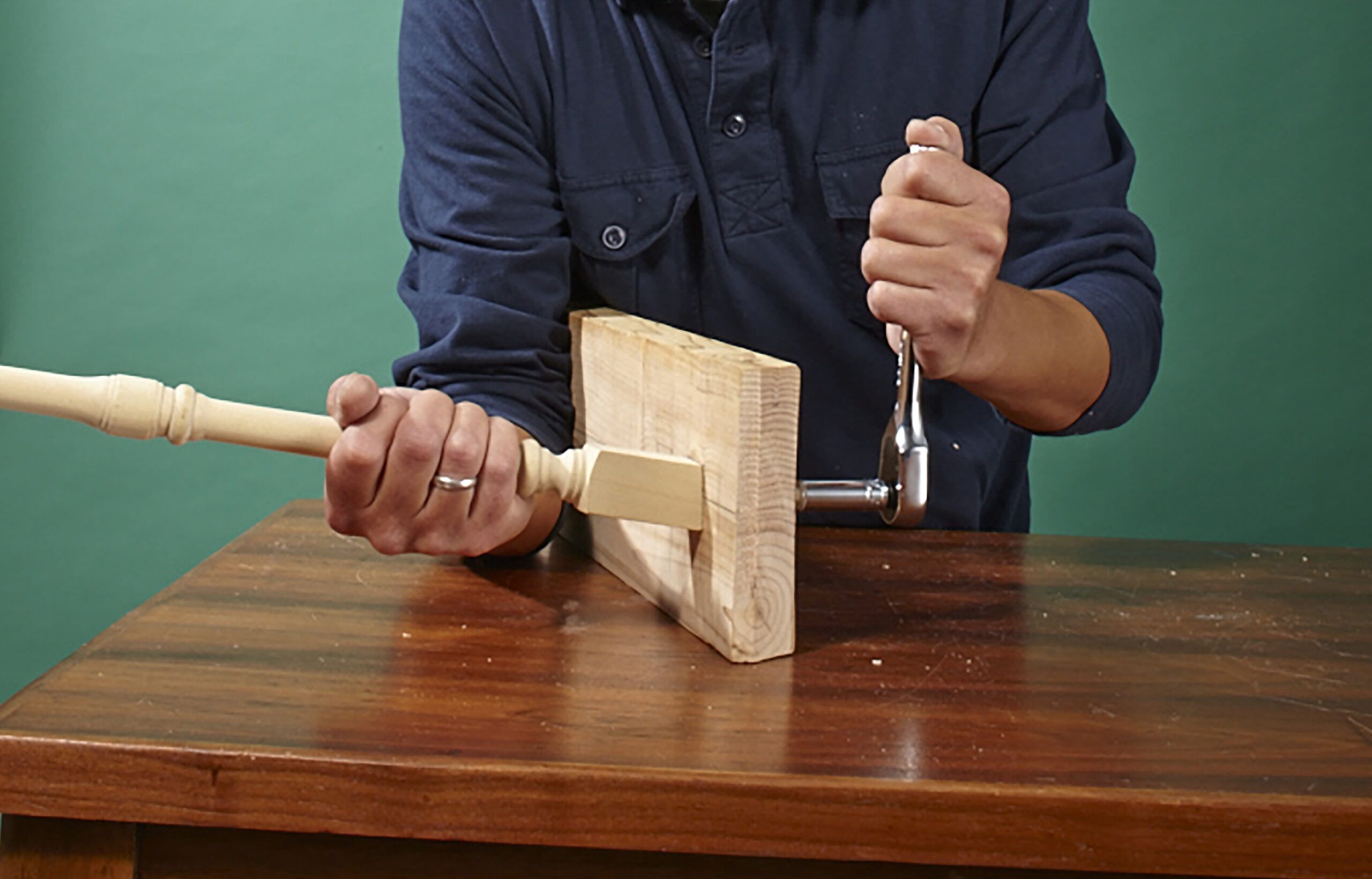
Now it’s time to attach the balusters to the base. Insert lag screws through the holes in the base and into the pilot holes you drilled in the balusters. Use a socket wrench with a 7/16-inch socket to tighten the lag screws securely.
As you attach each baluster, make sure it’s straight and aligned with the others. The 10-degree angle you cut on the baluster bases should all face the same direction, creating a uniform tilt for the boots to rest against. Periodically step back and check the alignment from different angles.
Step 6: Attach the Feet and Finish Attaching the Balusters

To complete your boot stand, you’ll need to add feet for additional stability. Cut two pieces of 2×4 to match the detailed ends of the base, snubbing the ends for a cohesive look. In our example, the feet are 8½ inches long, but you can adjust this based on your base size.
Attach the feet to the base using 2½-inch deck screws and your drill/driver. Make sure the feet are securely fastened and sit flush against the base. Once the feet are in place, finish attaching any remaining balusters to complete the structure of your boot stand.
Make sure the feet are evenly spaced to prevent wobbling and provide a stable foundation.
Step 7: Paint and Sealant
With the construction of your boot stand complete, it’s time to add the finishing touches. Prime and paint your boot stand to protect the wood and match your decor. Choose a paint color that complements your entryway or mudroom, and use durable, moisture-resistant paint to withstand wet boots.
For added protection against moisture, apply a clear waterproof sealant to the base and feet of the stand. This helps prevent water damage and extends the life of your boot stand.
Boot Stands: Customization Options
While this guide provides instructions for a specific design, there are many ways to customize your boot stand, such as the following:
- Add hooks or a small shelf above the boot stand for additional storage.
- Experiment with different types of wood or reclaimed materials for a unique look.
- Incorporate a drip tray beneath the stand to catch melting snow or mud.
- Paint each baluster a different color for a playful, eclectic style.
- Vary the number of balusters based on your needs and available space.
Boot Stand: Maintenance Tips
To keep your boot stand looking great and functioning well, follow these maintenance tips:
- Check and tighten any loose screws or fasteners periodically.
- Place a mat under the stand to protect your floor from drips or spills.
- Regularly wipe down the stand with a damp cloth to remove dirt and salt residue.
- Touch up paint as needed to prevent moisture from penetrating the wood.









